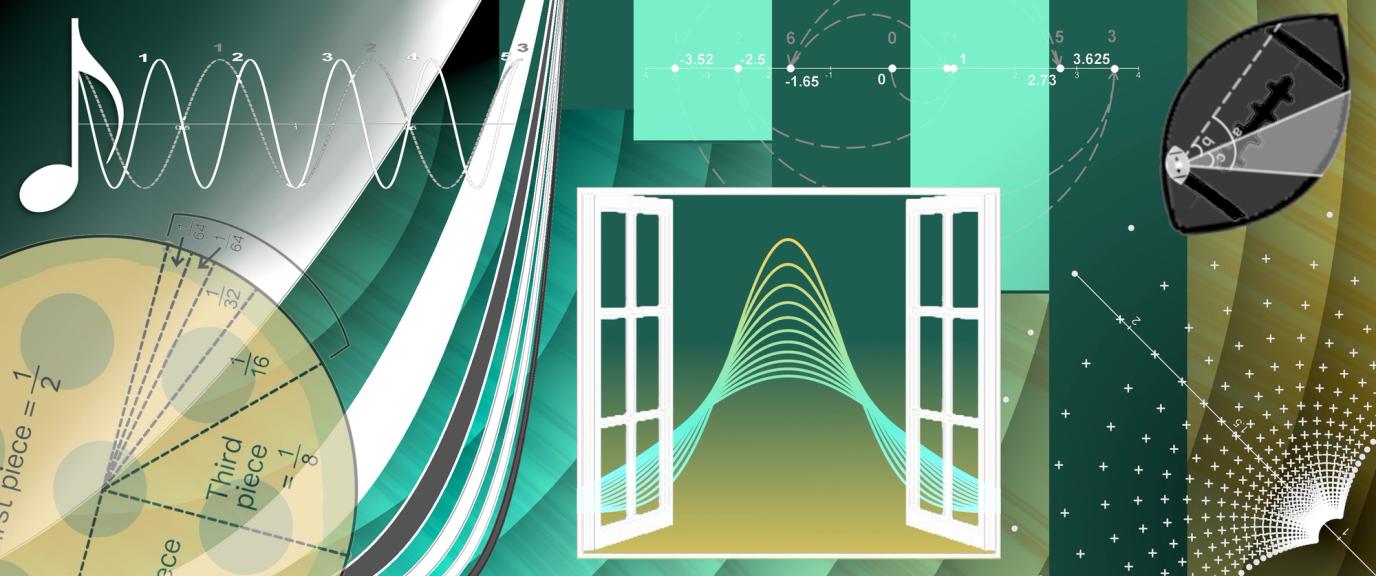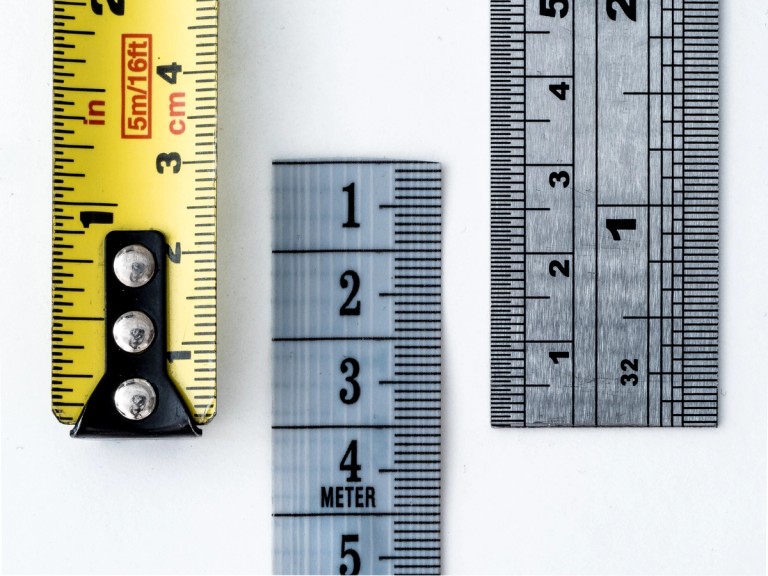“Beauty is the first test: there is no permanent place in the world for ugly mathematics.” — GH Hardy
Different perspectives
Do you like to view things from different perspectives? Most ideas and concepts become richer when viewed from different perspectives. Before we do math, let’s take a moment to consider some perspectives on what math actually is. My math came alive when I changed how I view math. Ultimately, your perspective on math is the final determination on whether your math is alive or not. It is not your skill or knowledge of math but your perspective of math that must come alive. Let me share some of my perspectives of math. These are not the right perspectives of math, just my perspectives.
Math unlimited
People often struggle with math because it is abstract. There is no such thing as 8 in the real world. Yes, we may have 8 grandchildren and we have a symbol for 8. But there is nothing in the real world that “is 8.” Ironically, this supposed disadvantage of math of not existing in the real world is a distinct advantage. Because math is abstract and only exists in our minds, it is also unlimited. This unlimited capacity of math is often underappreciated. This is partially because we limit math to textbooks and subjects we study. Imagine telling a musician that they cannot create new music. What makes creative work interesting and exciting is there is always something to create.
The same creative spirit is true with math. We have the freedom today to make up our own math. People do it all the time, and it is amazing. Since math is abstract and not bounded by inventory, there is no limit to the math we can create and enjoy. I encourage you to remove walls that may exist in your mind which limit your math from expanding. Math formulas are wonderful because they are clear and concise. But not understanding how a formula was created bypasses the journey, and usually the journey is more important than arriving. You may enjoy your favorite music. But, if you want to play music, you must start from the beginning of the creative process and not just focus on the finished song. Remember our goal is to do math, not just consume math.
It is true that math unlimited is enticing for those who like to create new math. However, for those who are trying to understand existing math, this can be overwhelming. Perhaps you are currently just trying to understand high school geometry. Just learning the basics is difficult enough. But, as a manageable first step, just think deeply about what you are learning. Consider different paths to a solution. There almost always are many different ways to solve problems. For starters, find two solutions to a problem and then compare and contrast those solutions. Consider why both solutions work. Why are there two ways to get to the same answer? This is the beginning of the creative process and can reveal surprising insights. You are creating bridges between different ideas and identifying how they are the same. There is no such thing as a math island. Math is full of not only ideas but bridges. Often, it is the bridging of ideas that is the most interesting. In Lazarus Math, we will often use different perspectives to bridge ideas.
Math boundaries
Math is not just a free-for-all of ideas. Fortunately, there are boundaries. The boundaries of math promote order and avoid chaos. One boundary is that math is confined to logic. If math is like bowling, the fastest way to get into the gutter is by using poor logic. Unlike popular opinion and much of science, math logic does not change. That leads to a second boundary of math. Once math is proven, it remains constant and does not change.
If you think about it, isn’t that wonderful? I have been doing math for over 50 years. There is not one thing that I have learned in those 50 years that was once right and now is wrong. Every single idea and piece of logic is just as true today as it was when I first learned it. When I think of investing 50 years in doing math, I appreciate what a great investment of time that is. I could have focused more on things that seemed more interesting at the time, such as the weather or the news or my yard. But all those things change.
As you and I invest time in math, that is something that nobody can take away from us. There will be no market crash of math that takes it away. It is a wealth of ideas that have been masterfully created throughout history from some of the best minds our world has known. I get to bring those ideas into my mind and think about them. Then I can use those ideas to build bigger ideas. I can do this without fear that those ideas will no longer be true or relevant.
Because math doesn’t change after it arrives, this leads to another feature of math that is underappreciated and taken for granted. Since proven math remains constant, it becomes a fixture. Consider other things that are fixtures in our lives, like the sun rising each day. Imagine if somehow light did not exist and we created light. What would our emotions be if today was the first day that the sun rose? It would certainly capture our attention. We would also wonder how it arrived. Another example of what we take for granted is paper. I imagine if we would have just invented paper, we would consider paper as one of the greatest inventions ever. Yet, since it has been around a long time and essentially hasn’t changed, has become “old technology” that is dated. But just because something has been around for a while doesn’t mean it lacks value. It just means it is not the latest shiny object that gets attention. Just ask your grandparents!
Life without math
Now, consider life without math. Try to inventory everything you see in one day that is connected to math and imagine what it would be like if math did not exist. It would be overwhelming. Try it for one hour, or just try it now. Everywhere you look, math is there. Actually, we don’t see some of the more interesting math because it occurs in the very small or very large. Math is everywhere and in everything. It is like air we breathe and music we sing. Why did it ever become a “subject” that gets crammed and tested? We don’t “cram air” or look for shortcuts in music. We sing, we dance. There is more flow and rhythm in math than any song we could compose. We just need to catch the beat.
Math alive and well
How do we catch the beat of the abstract? How do we learn to breathe patterns of symmetry? Can we truly go “to infinity and beyond?” You may think these ideas are crazy and certainly not attainable. Perhaps. However, this is how I imagine math. Thus, if you hang with me on this journey together, you will get a glimpse of concepts that have changed history and changed cultures. This is not a study session, and there are no tests. Just because I find something beautiful doesn’t mean you will. That is fine. What I am hoping for is for some of you to be inspired by what you see and to want to go further down this trail of wonder and mystery.
How do we hope to see math come alive? Our main method will be to do interesting math together. Occasionally, we will dig deep into a math idea. Most of the time, we will only scratch the surface. In addition to doing math, we will also learn the context of how math arrived. Because the math we know now seems like it has been around forever, we often do not consider that math got here somehow.
Math arrives
The story of how math arrives is fascinating. Among other reasons, math history is fascinating because it highlights how people birthed math into the world through ideas. At one time, there was not algebra. But, over time, several people from several cultures brought algebra into being. And it has been here ever since. What a wonderful thing that is. It sure seems like we should make room to learn from some of the great minds of the past.
We will visit the context of how math became important. Lazarus Math is not a math history book. But math only comes alive when viewed in context, and part of the context is understanding some of the wonderful stories about how math arrived through people. Thus, my approach is to give more of a teaser for the story of these people to encourage you to discover details of the origins of math and meet the math giants who gave it life.
Beautiful
Let’s face it. Some love math, but most people hate math. Why is there this polar split between the two camps? Yes, math is about solving problems. Yes, math abstracts problems to solve even more problems. Yes, we develop a structure so that everything is logical. These are reasons why math is useful, but these aren’t the reasons I do math.
I, and many others, do math because it’s beautiful. It is why I am writing this story—to share the beauty I see in math. Perhaps you will also discover this beauty hidden in unexpected places. Our time together is about slowing down and seeing things that others have considered priceless for centuries and passed down to generation after generation.
What you see and what you observe is personal to you, just like it is to me. I’m observing and ruminating what the greats of history have passed down from my perspective. I encourage you to do the same. There’s not a right way to behold beauty. How you see it and what you find fascinating will be different from my experience. That’s the freedom we have here. I will share some of the surprises I find, but my hope is you will encounter your own surprises.
That is enough of my perspectives. Let’s jump into math and begin our journey. This first section is more of a “warm-up” where we start with some of the foundations of math: sets and numbers. Even though we will only scratch the surface, hopefully you will get a glimpse of some of the treasures from a different framework.
Math is a treasure because it is a pattern of pivoting from the ordinary to the unexpected, from the finite to the infinite. Let’s journey through these treasures together to restore what is old and rethink what is new.
In the beginning
In the beginning was math. But where does math begin? The popular answer is numbers. However, thinking that math begins and ends with numbers misses a big point. Math is about life. Math cares about you—your cats, your dogs, your hamsters. Math people want to organize because we hate clutter. We see your cats are different from your dogs, which are different from your hamsters. Thus, we organize them into sets. A set is simply a collection of objects or elements. Logically, there would be one set for your dogs, one for your cats, and one for your hamsters. The set is a foundation for math. Math is built on sets. Using sets organizes our math and reduces the clutter. Who doesn't like a clutter-free world?
Since math is abstract, we literally could create millions of things in our math world. If we didn’t have sets, we would be managing these million things separately. What an overwhelming task! Using sets makes our math world much easier to manage. So, when you think of a math set, don’t think of it as another boring math thing. Rather, think of sets as a wonderful tool that brings order to our math world. Sets are our math foundation that allow us to walk, run, and play with math without fear of not having solid footing. Let’s consider an example of how we use sets with something so common we forget they are there: numbers.
Where do numbers begin? Math people care not only about organizing life but solving its problems as well. If you have 3 cats and you get 2 more cats, how many cats do you now have? We could picture a set of 3 cats and a set of 2 cats and bring them into one set of 5 cats.
System

Yes, math can solve your cat problem and your dog problem. But we want to go about it efficiently. Math hates one-offs. We don’t want to just solve your dog-cat-hamster problem; we also want to solve your finance problem. Thus, rather than thinking 3 cats and 2 cats, we decide to invent this number 3 and this number 2. Now we can solve your problem when you take 3 of one set and add it to 2 of another set, and we boldly declare that you have 5 in a set. As a result, numbers become part of sets, and what we do with numbers, like addition, are verbs acting on sets. Addition doesn’t feel like an action because it is abstract. But addition is an action of the abstract. Abstracting something such as cats into a number is a big thing. It’s a large mental step but one which we’re used to by now. It is a big step children must overcome. The fact that you understand this abstraction indicates your ability to do math.
Sets are the way we put math things in their proper place. It’s like cleaning house after the company leaves. When things are out of place, we find it worth the time to put things in place. It brings order to our lives. Sets are a lot like that. They bring order. Do sets have to follow rules? Sure. But these are the rules that we define for the set. You are free to create your own set by creating your own rules. Now, we are blessed because some smart people before us have given a lot of thought into how to create sets that make the most sense for all of us. So we benefit by learning about these sets and these rules and understanding how they work. These sets are like systems that have been proven over the test of time to work. We all recognize the benefit of a good system. It saves us time from making one-off decisions. The power and benefit of sets others have created is that we all agree about them. Someone created the set of positive integers. What a wonderful gift to us! The power of this set is we all agree on what it means. If you think about it, how many things in life do we have more agreement on than the set of positive integers? How many ideas survive differences in culture and time? Math has that amazing property. It all starts with some basic sets that have stood the test of time.
Math is this repeated process of working with sets, abstracting concepts, and organizing and doing things with them. There sure is a lot of action happening in this abstract world of math.










